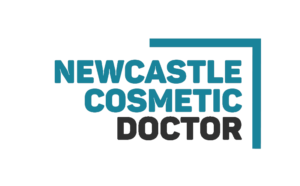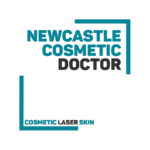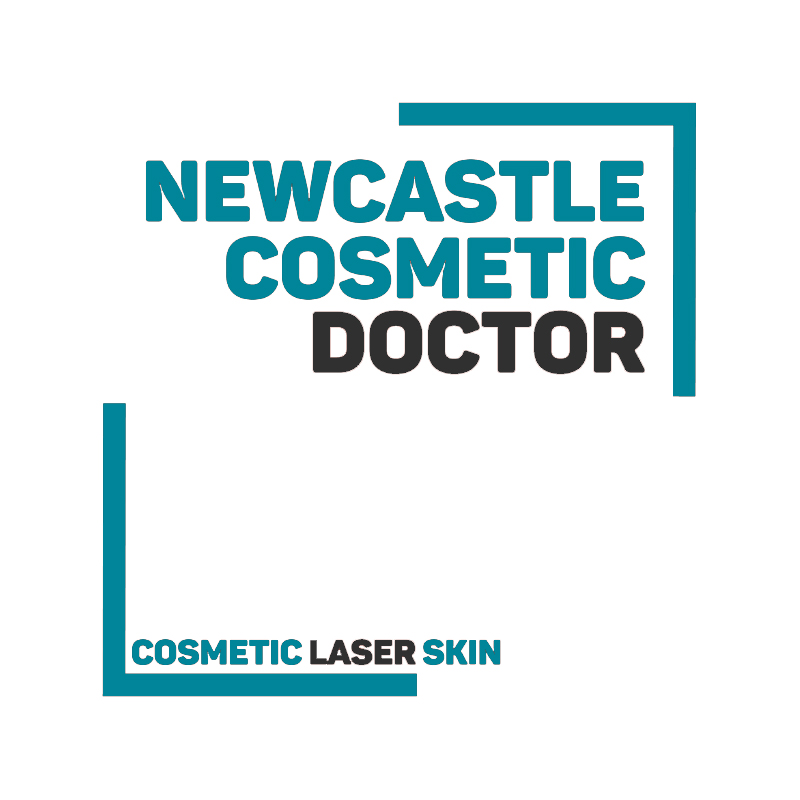Applies to: All NCD staff operating or assisting with Class 4 lasers (StarWalker MaQX) in the dedicated Laser Room
Devices: Fotona StarWalker MaQX – Q‑switched / picosecond‑capable Nd:YAG 1064/532 nm with dye handpieces 585/650 nm (Class 4), manufacturer IFU applied to all procedures
1. Purpose
Provide a complete, standardised, and auditable protocol for Class 4 laser tattoo removal with Fotona StarWalker MaQX at NCD. The protocol aims to maximise clinical efficacy, minimise risk of adverse effects, and comply with Australian laser safety, WHS, infection prevention, privacy, and clinical governance requirements.1 2 3 4 5 6 7 8 9 10
2. Scope
Applies to Laser Safety Officer (LSO), laser operators (doctors/authorised clinicians), assistants, trainees, and administrative staff involved in booking, triage, consent, treatment delivery, post‑care, documentation, maintenance, and incident management within the Laser Room.1 7 8
3. Governance & Standards
NCD integrates AS/NZS 4173 and AS/NZS IEC 60825.1 for device and room controls; ARPANSA's national guidance on non‑ionising radiation; WHS requirements via SafeWork NSW and Safe Work Australia; NSQHS for clinical governance, infection prevention and communication; AHPRA/Medical Board cosmetic guidelines for consent and consumer protection; OAIC APPs for health information handling; and TGA ARTG for device inclusion and vigilance.1 2 3 5 6 7 8 9 10
4. Roles & Responsibilities
LSO: safety program, risk assessments, eyewear OD matrix, signage, training, audits, incident review; Operator: credentialed for StarWalker, conducts pre‑use checks, parameter selection, patient shielding, documentation and aftercare; Assistant: trained in room controls, plume capture, eyewear checks, emergency shutdown; Medical Director: ensures governance, resourcing, and regulatory compliance.1 7 5
5. Patient Selection & Intake
Collect detailed medical history (allergies, photosensitisers, keloid tendency, prior tattoo removal, isotretinoin, pregnancy/breastfeeding, infection/herpes, immune conditions). Assess tattoo (age, colours, depth, professional vs amateur, anatomic site, scarring). Determine Fitzpatrick type and PIH risk. Set expectations for staged clearance and potential ghosting. Capture baseline photographs (standardised angles) with consent per privacy law.7 8 9 11
6. Informed Consent & Education
Provide plain‑language consent covering mechanism (photomechanical pigment fragmentation), benefits, alternatives, risks (blistering, burns, scarring, pigmentary change, textural change, infection, paradoxical darkening), number of sessions, intervals, aftercare, cost, and contact pathway. Apply cooling‑off consistent with cosmetic guidelines. Store consent securely under APPs.7 8 9
7. Contraindications & Precautions
Absolute: pregnancy/breastfeeding; active infection/dermatitis at site; known keloid diathesis at high‑risk sites. Relative: recent tanning; photosensitising medicines (e.g., doxycycline); Fitzpatrick IV–VI (heightened PIH risk); recent isotretinoin; history of hypertrophic scarring. Defer until risks are mitigated and parameters can be adjusted safely.1 3 7 11
8. Patch Testing
Perform a representative test spot (or grid) at conservative fluence using the intended wavelength(s): 1064 nm for black/blue/green; 532 nm for red/orange/yellow; dyes 585/650 nm if indicated. Review at 4–8 weeks (longer for darker skin) for clearance, PIH/POH, and adjust plan accordingly.1 11
9. Controlled Area & Engineering Controls
Operate in a Class 4 controlled room: restricted access, door closed, illuminated 'DANGER – LASER IN USE' sign, wavelength/class displayed, non‑reflective surfaces, interlocks where available, footswitch protected, oxygen minimised. Maintain a plume control system with ULPA/HEPA + activated carbon; place nozzle within 2 cm of site; change filters per schedule.1 2 3 12 5 6
10. PPE & Eyewear
All persons in the controlled area wear wavelength‑specific eyewear: OD 6+ for 1064 nm and OD 4+ for 532/585/650 nm per AS/NZS 4173. Operator and assistant use nitrile gloves, fluid‑resistant gowns/aprons if splatter risk, and fit‑tested N95/P2 respirators or surgical masks depending on plume exposure assessment. Maintain eyewear in good condition, inspect for scratches or damage, and store in protective cases. Fire extinguisher and emergency eyewash accessible.1 3 4 5 6 13 14 15 16
11. Device Checks & Maintenance
Daily pre‑use checks: key switch, emergency stop, aiming beam alignment, handpieces/tips, fibres/arms, footswitch responsiveness, warning light, smoke evacuator. Parameter verification: program, spot size, fluence, pulse duration, repetition rate. Maintain service intervals per manufacturer; retain ARTG inclusion and service reports.1 10 11
12. Treatment Planning & Parameters (StarWalker)
Select wavelength by pigment colour; choose spot size for depth vs fluence trade‑off; start conservative fluence aiming for immediate whitening (frosting) without epidermal injury. Use Q‑switched and picosecond modes per IFU and indication; employ cooling between passes; avoid excessive passes that heighten scarring or PIH.1 11
13. On‑the‑Day Procedure
Time‑out: identity, site, device, parameters, eyewear, plume capture, fire precautions. Cleanse with non‑flammable prep and ensure dryness. Technique: perpendicular handpiece, 10–20% overlap as indicated, observe endpoints, document per‑pass response and patient comfort. For multicolour tattoos, treat black first at 1064 nm, then target reds/oranges with 532 nm at same or later session.1 11
14. Aftercare
Apply cool compresses; avoid heat/friction/occlusion 48–72 h. Gentle cleansing and bland emollient; non‑adherent dressings for weeping areas. Strict SPF 50+ for 4+ weeks; clothing/hat recommended. Avoid pools/hot tubs and vigorous exercise for 48 h; withhold acids/retinoids on treated area until healed.7 17 18
15. Follow‑Up & Repeat Treatments
Review at 6–8 weeks for lighter skin types and 8–12+ weeks for darker skin to lower PIH risk. Expect 6–12 sessions for dense professional black tattoos; fewer for amateur tattoos. Adjust fluence/spot/intervals based on clearance, blistering, textural change, or paradoxical darkening.1 11
16. Adverse Effects & Management
Common: erythema, oedema, pinpoint bleeding, transient blistering, crusting. Pigmentary change (PIH/POH) is managed with strict photoprotection, topical depigmenting agents as appropriate, and longer intervals. Infection: consider culture and antimicrobials if indicated; wound care. Scarring/textural change: avoid overtreatment; silicone sheeting/gel; refer if hypertrophic. Ocular exposure: cease immediately, urgent ophthalmology referral, incident review.7 12 13
17. Incident Reporting & Regulatory
Record all incidents/near‑misses; serious device‑related events are reported to TGA DAEN. WHS notifiable incidents follow SafeWork NSW processes. Undertake root cause analysis and implement CAPA; review controls and training.5 6 7 10
18. Documentation, Privacy & Traceability
Maintain laser logs (date, operator, parameters, passes, response, events), device service/calibration certificates, filter change logs, eyewear OD matrix, signage checks, consent forms and photographs. Store health information under APPs; manage access by authorised staff only.7 9 10 12 18
19. Training, Credentialing & Audit
Operators complete StarWalker‑specific training and a laser safety course referencing AS/NZS 4173. Quarterly audits evaluate eyewear OD matching, signage, interlocks/warning lights, plume performance, emergency kit readiness, documentation completeness, and incident close‑out. Non‑conformances trigger corrective actions and re‑training.1 7 5
20. Patient Communication, Pricing & Advertising Compliance
Provide a plain‑English fee schedule per session, explaining factors affecting total cost (size, colours, density, site, number of sessions). Ensure all external communications comply with AHPRA advertising guidance; avoid misleading claims and ensure transparent pricing per consumer law.8 7
Sources
- Standards Australia/Standards New Zealand (2018), AS/NZS 4173:2018 Safe use of lasers and intense light sources in health care, viewed 22 October 2025, https://store.standards.org.au/product/as-nzs-4173-2018 ↩︎
- Standards Australia/Standards New Zealand (2014), AS/NZS IEC 60825.1:2014 Safety of laser products – Equipment classification and requirements, viewed 22 October 2025, https://store.standards.org.au/product/as-nzs-iec-60825-1-2014 ↩︎
- Australian Radiation Protection and Nuclear Safety Agency (ARPANSA) (2025), Lasers and optical radiation safety, viewed 22 October 2025, https://www.arpansa.gov.au/understanding-radiation/non-ionising-radiation/lasers ↩︎
- NSW Health (2023), GL2023_018: Controlling Exposure to Surgical Plume, viewed 22 October 2025, https://www.health.nsw.gov.au ↩︎
- SafeWork NSW (2025), Work Health and Safety legislation and guidance, viewed 22 October 2025, https://www.safework.nsw.gov.au/law-and-policy/work-health-and-safety-legislation ↩︎
- Safe Work Australia (2025), Managing laser safety and healthcare hazards, viewed 22 October 2025, https://www.safeworkaustralia.gov.au/topic/laser ↩︎
- Australian Commission on Safety and Quality in Health Care (ACSQHC) (2025), National Safety and Quality Health Service Standards, viewed 22 October 2025, https://www.safetyandquality.gov.au/standards ↩︎
- Ahpra/Medical Board of Australia (2025), Guidelines for non‑surgical cosmetic procedures, viewed 22 October 2025, https://www.ahpra.gov.au/News/2025-01-31-Guidelines.aspx ↩︎
- Office of the Australian Information Commissioner (OAIC) (2025), Australian Privacy Principles, viewed 22 October 2025, https://www.oaic.gov.au/privacy/australian-privacy-principles ↩︎
- Therapeutic Goods Administration (TGA) (2025), Australian Register of Therapeutic Goods (ARTG) search, viewed 22 October 2025, https://www.tga.gov.au/resources/artg ↩︎
- Fotona (2025), StarWalker MaQX technical brochure and IFU, viewed 22 October 2025, https://www.fotona.com/media/documents/aesthetics/brochures/97370_starwalker_maqx___qx_brochure_web.pdf ↩︎
- NSW Health (2020), PD2020_026 Infection Prevention and Control Policy, viewed 22 October 2025, https://www1.health.nsw.gov.au/pds/ActivePDSDocuments/PD2020_026.pdf ↩︎
- National Health and Medical Research Council (NHMRC) (2019), Australian Guidelines for the Prevention and Control of Infection in Healthcare, viewed 22 October 2025, https://www.nhmrc.gov.au/about-us/publications/australian-guidelines-prevention-and-control-infection-healthcare-2019 ↩︎
- WA Country Health Service (2022), Surgical Smoke/Plume Procedure, viewed 22 October 2025, https://wacountry.health.wa.gov.au ↩︎
- WorkSafe Victoria (2021), Managing surgical plume in healthcare, viewed 22 October 2025, https://www.worksafe.vic.gov.au ↩︎
- RESP-FIT / Standards Australia (2023), Respiratory fit testing and respirators guidance, viewed 22 October 2025, https://respfit.org.au ↩︎
- Fire and Rescue NSW (2025), Workplace fire safety (portable extinguishers, evacuation), viewed 22 October 2025, https://www.fire.nsw.gov.au/ ↩︎
- OAIC (2025), Guide to Health Privacy – Handling health information, viewed 22 October 2025, https://www.oaic.gov.au/privacy/guidance-and-advice/guide-to-health-privacy ↩︎


